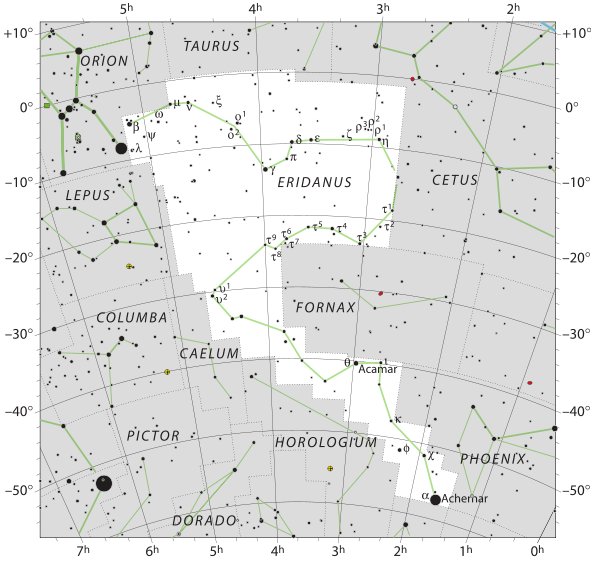3. Allen:
"In early Arabia this [Beid] was Al Baīd, the Egg, from its peculiarly white color, as well as from its position near the Ostrich's Nest."
This statement forces us to, somewhat prematurely, consider also Cursa (β Eridani) in the 6th hour:
"Cursa, 3º to the northwest of Rigel in Orion, is the principal star in the constellation, seen from the latitude of New York City. The word is from Al Kursiyy al Jauzah, the Chair, or Footstool, of the Central One, i.e. Orion, formed by β, λ, and ψ Eridani ... and regarded as the support of his left foot; but in the earlier astronomy of the nomads it was one of Al Udhā al Na'ām, the Ostrich's Nest, that some extended to ο¹ and ο². The Century Encyclopedia gives Dhalim as an alternative title, undoubtedly from Al Thalīm, the Ostrich; but although used for it by several writers, this better belongs to θ ..."
Ariki in Ga1-13 - cfr ariki in Ga1-5 (υ² Eridani) - is maybe λ Eridani:
The egg of an ostrich (a kind of moa, i.e. a bird with female characteristics, it cannot fly) is very big and very white (like the full moon):
And perhaps the skull of a great chief (cfr Ga1-11) is needed to produce it: ... Up to the present time, fertility spells for fowls have played an important role. Especially effective were the so-called 'chicken skulls' (puoko moa) - that is, the skulls of dead chiefs, often marked by incisions, that were considered a source of mana. Their task is explained as follows: 'The skulls of the chiefs are for the chicken, so that thousands may be born' (te puoko ariki mo te moa, mo topa o te piere) ... As long as the source of mana is kept in the house, the hens are impregnated (he rei te moa i te uha), they lay eggs (he ne'ine'i te uha i te mamari), and the chicks are hatched (he topa te maanga). After a period of time, the beneficial skull has to be removed, because otherwise the hens become exhausted from laying eggs ... In the oval of Ga1-16 there seems to be a kind of embryo. In the Tagaroa chapter I have discussed its meaning and also pointed out the probable relationship with Gb3-5:
|
||||||||||||||||||||||||||||||||||||||||||||||||||||||||||||||||||||||||||||||||||||||||||||||||||||||||||||||||||||||||||||||||||||||||||||||||||||||||||||||||||










